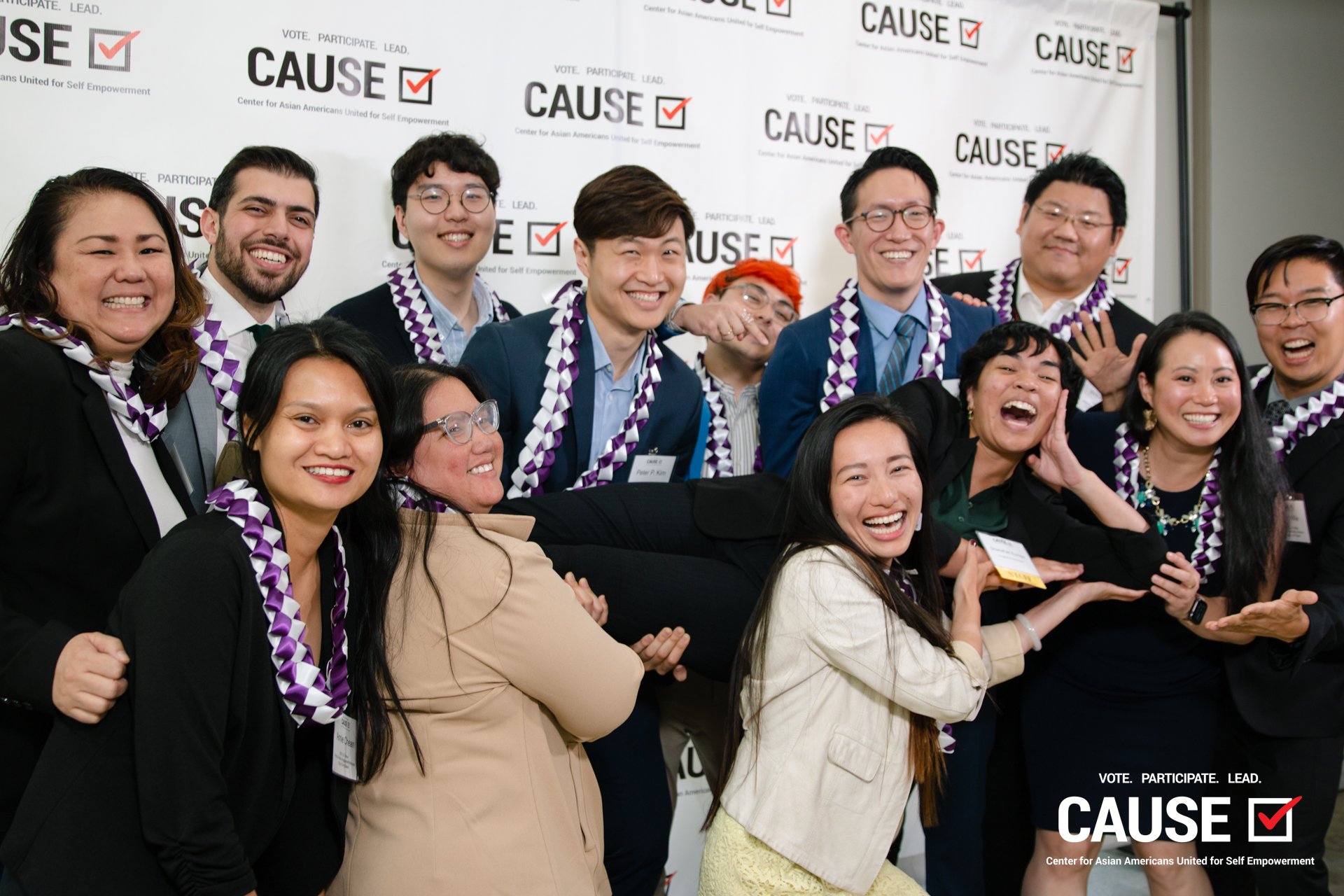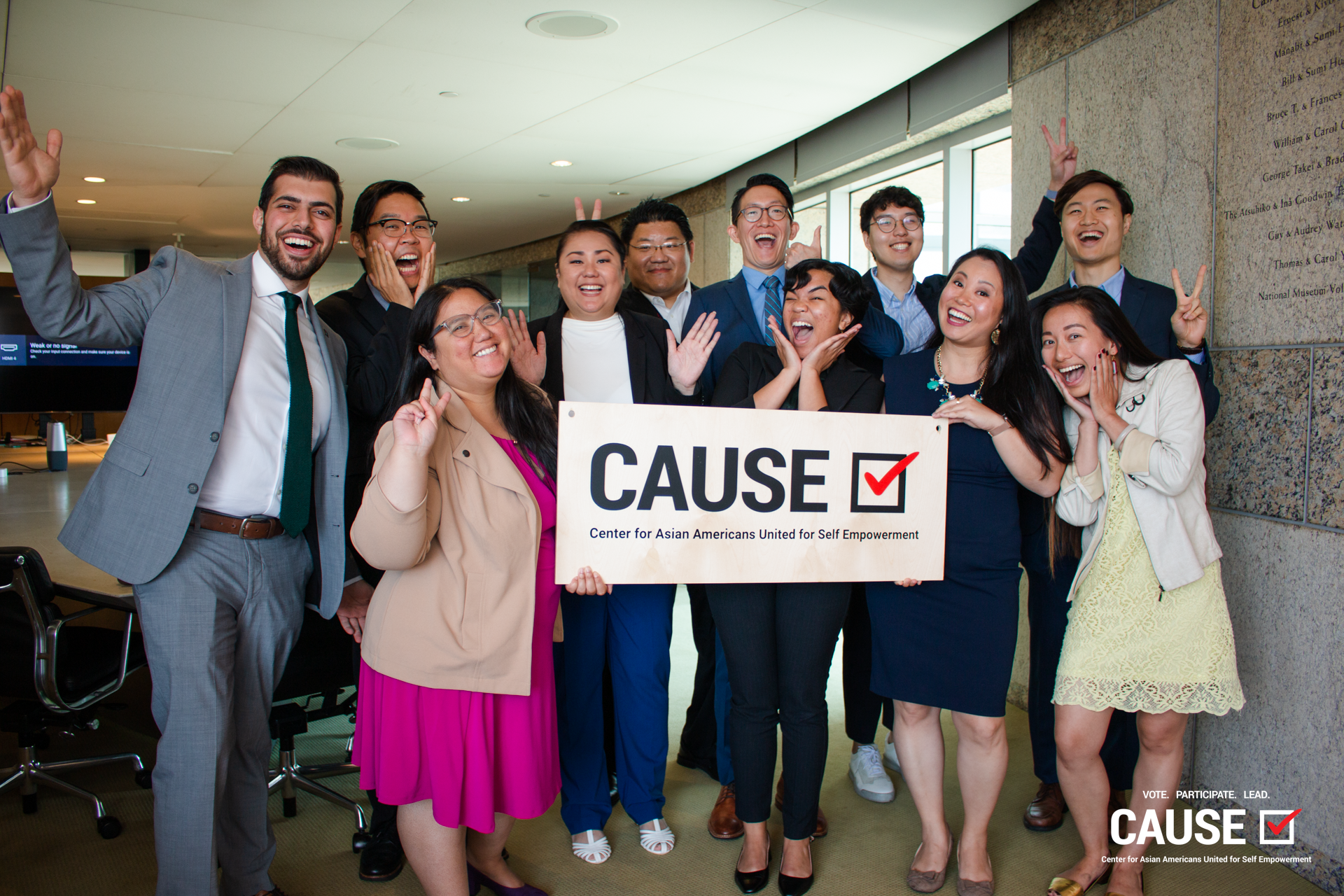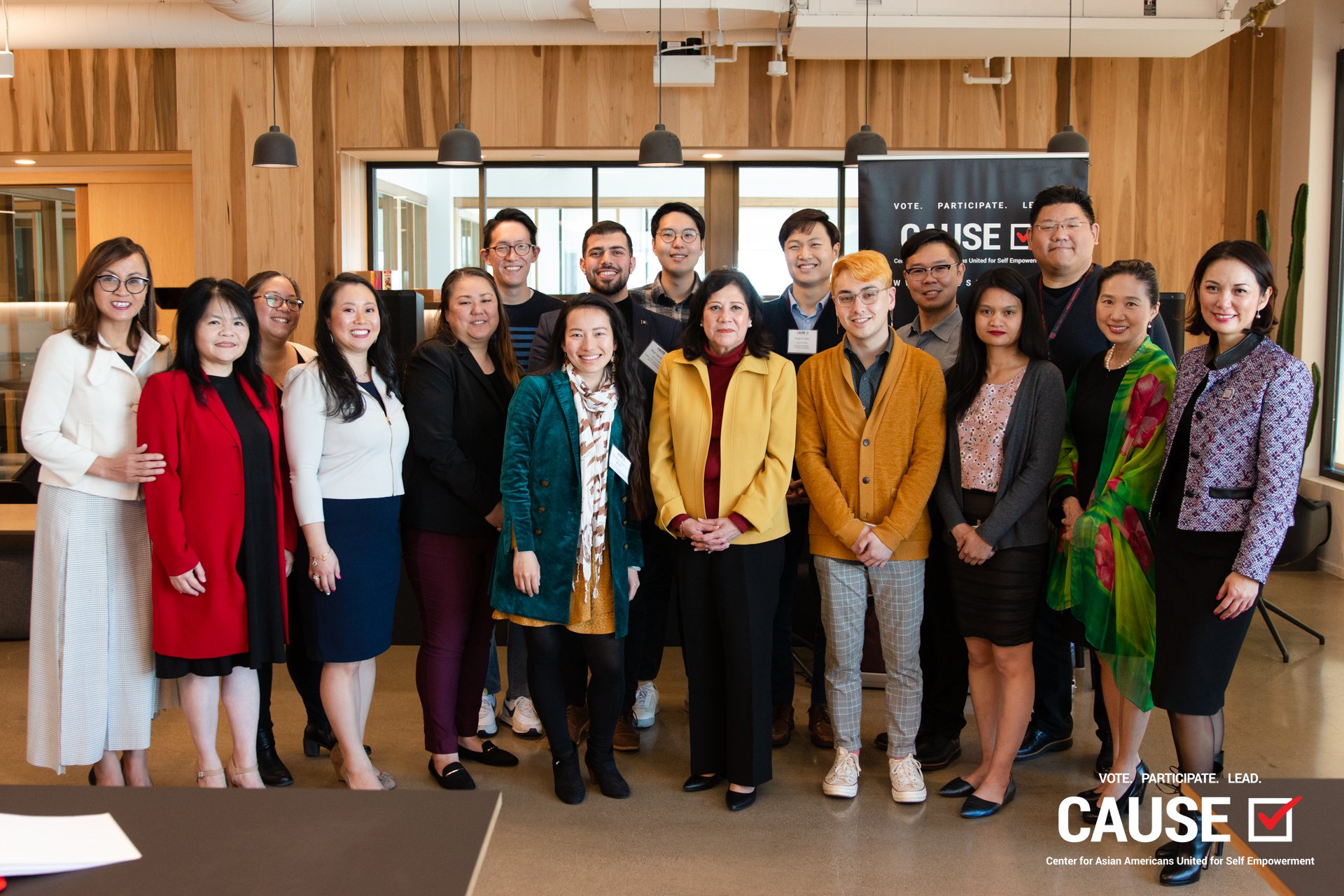The last week of my CLI (CAUSE Leadership Institute) experience was an emotional rollercoaster. As I reflect on my transformative journey with CAUSE, I realized that what started as trepidation and uncertainty prior to submitting my application has now culminated into an incredible program where I met fellow passionate AAPI (Asian American and Pacific Islander) leaders and individuals from all over the United States. Throughout the program, the 2023 CLI Cohort shared our unique perspectives as leaders and visionaries within our respective communities and empowered each other to continue to explore our passions and duties as AAPI leaders and role models. We also promised to stay connected to build upon the intersections of our diverse Community Impact projects. All in all, graduation was both the end of a chapter and the beginning of another, as the 2023 CLI Cohort bid a temporary farewell to CAUSE and CLI and looked forward to the future. But first, graduation.
Graduation day kicked off with a heartwarming gathering at the Japanese American National Museum, located aptly in the heart of Little Tokyo. We started the morning catching up over light pastries, reminiscing about our time together, and celebrating our achievements as a cohort. The historic museum provided a beautiful backdrop for our final hours together as a cohort, symbolizing the rich history and heritage that we, as AAPI leaders, represent and carry with us.
After catching up, we embarked on finalizing our respective Community Impact projects. It was truly enlightening to hear about the diverse passions and initiatives that each member of our cohort was pursuing as we bounced ideas off each other via the Socratic method. We held each other accountable and offered support and guidance as we prepared to make a positive, meaningful, and lasting impact in our communities. This collaborative effort showcased the power of unity and reinforced our commitment to creating meaningful change.
Lunch break! After debating (also using the Socratic method) about what to get for lunch, we journeyed through Little Tokyo and hopped onto the newly remodeled Little Tokyo metro stop (our way of voting with our “wallets” on the importance of having accessible and sustainable public transportation even though the metro free that day). Our lunch together at Marugame Monzo, a local favorite, was a perfect blend of cultural immersion and camaraderie. For those in the cohort from out of town, it was a delightful introduction to the diverse flavors and experiences that Los Angeles has to offer. Lunch flew by too quickly and, as we realized we had spent more than the allotted time at lunch, we hurried back (also via metro) to finish our close-out activities.
The close-out activities marked a particularly emotional period. We took the time to write letters to our future selves, capturing our feelings, goals, and the lessons we had learned during our shared CLI experience. Following that, we expressed our gratitude to the cohort and CAUSE staff through short rainbow sticky notes, where we acknowledged the impact each person had on our experience and growth. At the end of the activity, a colorful array of rainbow sticky notes lined the table which served as a powerful testament to how diversity and inclusivity efforts had brought us all together and the bonds we had formed from our diverse backgrounds. I realized with a growing sense of ambivalence that, much like the 2023 CLI Cohort timeline, the day had passed by too quickly and it was already time for the graduation ceremony.
The graduation ceremony was a celebration of the culmination of our efforts and a testament to the impact the program has made. The dimly lit room buzzed with excitement as CAUSE board members and staff, CLI alumni, and friends and families filled the space. The ceremony commenced with a rousing speech by Mike Eng, a respected figure in local politics and a former mayor and council member of Monterey Park. Charlie Woo, Board Chairman of CAUSE and a constant presence throughout our CLI journey, also shared his wisdom and encouragement. Finally, Bilal Hammoud, CLI Fellow and the definitive keynote speaker, closed out the graduation by reminding us of the incredible potential within each one of us and acknowledged the contributions CAUSE and each CLI member had on the 2023 CLI Cohort experience.
I extend my heartfelt gratitude to CAUSE for putting together such an exceptional CLI program. This experience has not only equipped us with valuable skills and knowledge but has also fostered rare lasting connections among the cohort. As we bid farewell to CLI, I am excited about the prospect of staying connected and witnessing the incredible things each member will achieve in their respective endeavors. The CLI program has given us the tools and inspiration to make a positive impact in our communities, and I am confident that the skills we have cultivated will continue to shape our journey long after the CLI program has ended.
The end of the 2023 CLI program is not an end at all but a springboard to new beginnings. Armed with our community impact plans, letters to our future selves, and the support of our cohort, we embark on the next chapter of our lives, eager to make a lasting difference. As we step into the future, we carry with us the memories, lessons, and friendships that have made this CLI experience truly unforgettable. And I know that, together, we will continue to create a brighter, more inclusive, and empowered AAPI community.


The views and opinions expressed in this publication are those of the author and do not reflect the views or positions of CAUSE or the CAUSE network.
Written by Alec Tsai, Leadership Institute 2023 Fellow.
The CAUSE Leadership Institute (CLI) for professionals is a 6-month-long certificate program that prepares and equips mid-career professionals with the tools, skills, and network to lead and advocate for the Asian Pacific Islander community.














